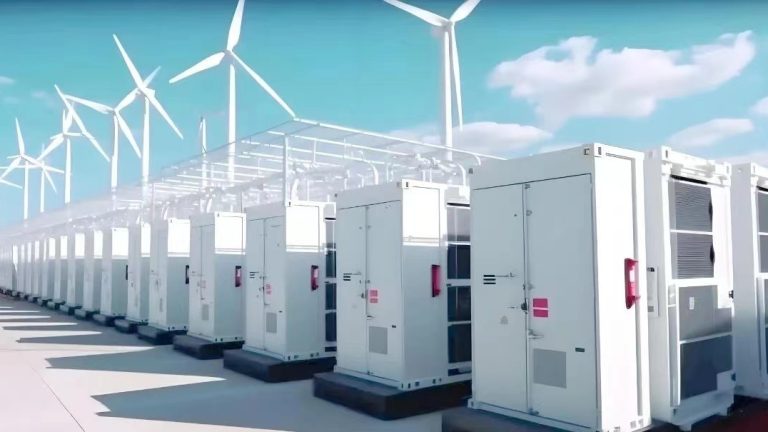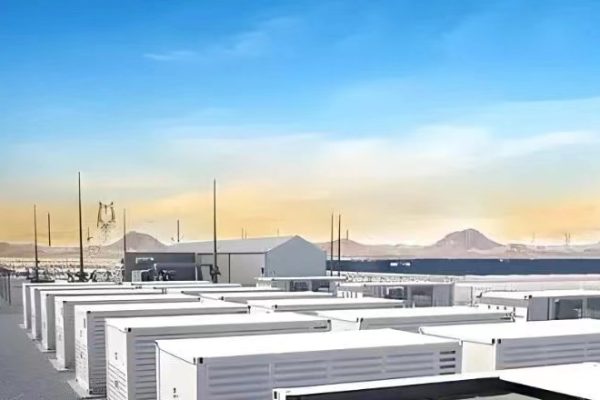Industrial parks are large-scale hubs that encompass multiple businesses, each with varying energy demands. Given the complexity of energy consumption, managing energy costs in such settings can be challenging. From peak demand charges to grid reliability issues, industrial parks face significant hurdles that affect both operational costs and sustainability goals.
With the increasing integration of renewable energy and the demand for sustainable operations, modular energy storage systems have emerged as a transformative solution. These systems allow for energy optimization by storing excess energy during low-demand periods and discharging during high-demand peaks, thereby cutting down on grid dependency and peak shaving.
This article explores how modular energy storage can help industrial parks optimize energy costs, featuring a replicable solution architecture, a real-world case study, and highlighting key technical insights for system implementation.
1. The Energy Cost Challenges in Industrial Parks
Energy costs in industrial parks often consist of:
- Fixed costs for connecting to the grid (e.g., demand charges, capacity fees)
- Variable costs for actual consumption (e.g., electricity prices)
- Reactive costs related to energy quality (e.g., voltage spikes, brownouts, equipment damage)
Key Challenges:
- Peak demand charges: Industrial parks often face significant charges during times of high consumption, especially when multiple facilities simultaneously ramp up their energy use.
- Grid instability: Many industrial parks are located in areas where the grid is either unreliable or not adequately upgraded for high-density energy demands.
- Lack of energy efficiency: Older equipment and centralized power systems often waste energy, leading to inefficiency and higher operational costs.
To address these challenges, modular energy storage systems can help flatten the energy consumption curve by charging when the grid is underutilized (typically overnight) and discharging during peak periods, thereby reducing grid dependency.
2. Modular Energy Storage Architecture: A Replicable Solution
Core Components
A modular energy storage solution typically consists of the following elements:
- Battery Storage System: Ranges from 50 kWh to 1,000 kWh, depending on the size of the industrial park. Lithium-ion (LiFePO₄ or NCM) batteries are commonly used due to their high energy density, long life, and safety features.
- Energy Management System (EMS): Software that monitors energy consumption and coordinates the charging/discharging cycles of the battery storage. It uses data from the grid, onsite generation (such as PV systems), and the energy demand profile to optimize storage usage.
- Power Conversion System (PCS): Converts DC power from the batteries into AC power that can be used by the industrial park facilities.
- Solar PV Systems (Optional): These can be integrated into the storage system to provide additional renewable energy input and further reduce dependency on the grid.
How it Works:
- Grid Charging Mode: When energy demand is low and electricity prices are cheaper (typically at night), the storage system charges from the grid.
- Renewable Charging Mode: When there is excess energy from onsite solar PV, the batteries store this energy for later use.
- Peak Shaving Mode: During high-demand periods, the system discharges stored energy to avoid grid consumption, minimizing peak demand charges.
By incorporating modular designs, each industrial park can start with a smaller setup and scale up the system as the energy needs grow, making the solution cost-effective and adaptable.
3. Case Study: Modular Storage Solution for an Industrial Park in California
Background
A medium-sized industrial park in California, with over 20 tenants in manufacturing, electronics, and food production, faced severe grid penalties due to fluctuating energy usage. The grid demand charges represented more than 30% of the overall electricity bill, and the local utility provider imposed time-of-use (TOU) rates that made energy costs even more volatile.
The Challenge
- The energy consumption was highly variable, with peak demand spikes around noon and early evening.
- Large-scale machinery and HVAC systems in different buildings were often running simultaneously, causing simultaneous high-energy consumption.
- The park was paying a premium for electricity during peak hours.
The Solution
A modular energy storage system was deployed to address these issues:
- 400 kWh of LiFePO₄ battery storage installed across four key buildings
- Central EMS to manage energy usage across the park
- 100 kW PV solar array installed on-site to provide additional renewable energy
- Peak shaving strategy to displace up to 30% of grid consumption during peak hours
The system was designed to be modular, allowing future expansion to support additional tenants or energy needs.
Results
- Peak demand charges were reduced by 25% through the use of stored energy during high-demand hours.
- Energy costs decreased by 17% annually due to the combination of solar generation, storage, and peak shaving.
- The return on investment (ROI) was realized in under 3.5 years.
- The park saw increased energy resilience, with less reliance on grid power during outages or supply interruptions.
4. Key Technical Insights: Designing for Flexibility and Efficiency
a) Scalability
A key benefit of modular energy storage is its ability to scale. This is particularly useful in industrial parks, where energy demands may fluctuate based on seasonal production cycles or the addition of new tenants. Starting with smaller systems (50–200 kWh) and expanding as needed helps manage upfront costs while providing long-term flexibility.
b) Smart Energy Management
The EMS plays a crucial role in the system’s efficiency. It coordinates the following:
- Load forecasting: Predicts energy demand based on historical data and planned production schedules.
- Optimized dispatch: Discharges energy only when needed, avoiding unnecessary wear and maximizing storage capacity.
- Grid and renewable integration: Manages how the system charges based on available grid power and solar generation.
By using AI-based analytics and real-time data monitoring, the EMS continually optimizes energy dispatch to minimize costs.
c) Modular Battery Configuration
By using a modular approach, each building or tenant within the park can have a dedicated battery system that is part of a larger integrated system. This reduces the need for complex rewiring or disruptions when scaling or adding new components.
d) Efficiency of Solar Integration
Integrating solar PV systems with the storage solution allows industrial parks to leverage clean, renewable energy during the day and store excess energy for use at night. This reduces the amount of grid electricity needed during peak hours and helps with decarbonization goals.
5. Economic and Operational Impact
| Parameter | Typical Value for Modular Storage System |
|---|---|
| Battery capacity | 50 kWh – 1,000 kWh |
| Annual savings on energy costs | 15% – 30% |
| Peak demand reduction | 20% – 30% |
| Return on investment (ROI) | 3 – 5 years |
| System uptime | ≥ 99% |
These values are typical for industrial parks with a variety of tenants, ranging from light manufacturing to heavy industry. The systems are designed for continuous operation with minimal downtime and require minimal maintenance due to their modular design.
6. Beyond Energy Savings: Strategic Advantages
The integration of modular energy storage systems offers several other advantages:
- Sustainability and ESG compliance: With stricter environmental regulations, industrial parks can reduce their carbon footprint by incorporating renewable energy sources and reducing reliance on fossil fuels.
- Energy resilience: In case of grid failure, the park can continue to operate on stored energy, reducing downtime.
- Attracting new tenants: Sustainable and energy-efficient parks are more attractive to potential tenants, especially those with corporate sustainability goals.
Modular energy storage systems provide an effective, scalable solution for industrial parks looking to optimize energy costs. By addressing peak demand charges, improving energy efficiency, and enabling renewable energy integration, these systems offer a sustainable path toward lower operational costs, improved grid resilience, and enhanced profitability.
For EPCs, system integrators, and industrial energy managers, this modular approach represents a powerful tool for cost optimization and long-term strategic growth.









